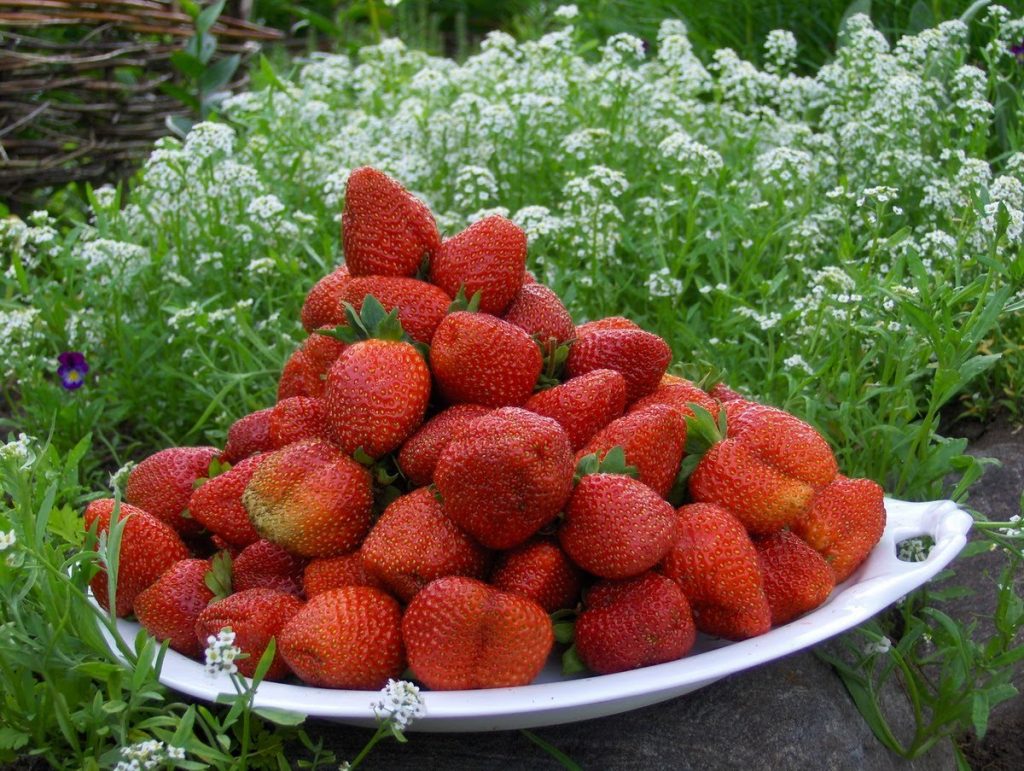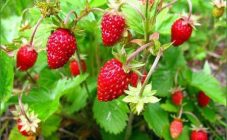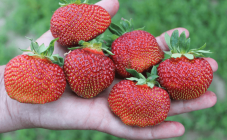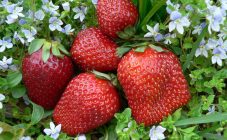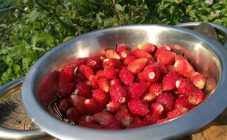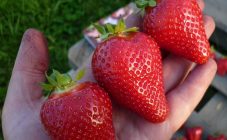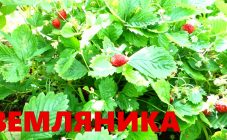Content:
For some reason everyone calls garden strawberries strawberries. But these are two completely different berries. They differ primarily in the fact that strawberries are female and male, for the formation of fruits in the garden must be present:
- female plants - 80%;
- male plants - 20%.
It should be noted that there are no berries on male bushes, only flowers and a mustache. But without such plants, there would be no berries on female bushes. Strawberries have both female and male flowers on the same bush.
But no matter how this berry is called, we must pay tribute: it is very tasty and healthy.
Back in 1954, German breeders were faced with the task of developing a strawberry variety with good transportability, and so that it could grow in areas with a cool climate. Under the leadership of Reinhold von Sengbusch, the Sieger and Marke varieties were crossed, resulting in a variety with the required qualities: Zenga Zengana. It tolerates low temperatures well and gives a good harvest.
Zenga Zengana strawberry: variety description
Strawberry bushes of this variety are vigorous, tall (30-50 cm high), compact. There are few rosettes on the bush. Peduncles grow below the leaves, or at best at their level. As a result, the berries can touch the soil; mulching is recommended to keep them clean. A lot of multi-flowered compact inflorescences are formed on the bush.
On one plant, Zenga Zengan berries can have a different shape: an inverted trapezoid, a pointed trapezoid, a wide-conical one, and even a somewhat curved one. The berry has no neck. Skin color from bright red to burgundy (depending on where it grows: in the shade it will be paler, in the sun - more saturated color). The yellow-brown seeds are pressed into the pulp. The color of the pulp is red. The taste is sweet, with slightly noticeable sourness and pineapple aroma. If the berry is overripe, it will smell and taste like raspberries. The pulp has a dense consistency. Ripening of this type of strawberry occurs in mid-July, as the variety is mid-season. The first berries can weigh more than 30 g, the next ones have an average weight of about 10 g. The yield from a bush reaches 2-2.5 kg. Leaves are small, regular in shape, with jagged edges
Zengan's strawberry is a winter-hardy variety, it can easily withstand temperatures down to minus 25 ° C.
This type of strawberry has a very poor immunity to gray rot and spotting. But powdery mildew, verticillosis and root diseases damage it much less than other varieties. Also, Zenga Zengan's strawberries are not damaged by strawberry mites, whiteflies, leaf beetles and aphids.
Planting and leaving
This strawberry is very fond of sunny places and absolutely does not tolerate shade. Therefore, for planting, you must choose a place so that it is completely in the sun. It is best to locate a plot for this culture on the south side or in the center of the garden plot. There should also be no drafts. Like any other crop, strawberries need fertile soils.
Strawberries should be planted either in autumn or in spring. For an autumn planting, a place for it is prepared no later than a month before the planned date. For spring planting, the soil must be prepared in the fall.The area allocated for strawberries must be dug up, removing all weeds, and fertilizer must be added. For 1 square meter, add:
- Humus - ½ bucket;
- Superphosphate - 2 tablespoons;
- Potassium supplement - 1 tablespoon;
- Wood ash - 1 glass.
Dig up everything again and leave it either for a month or until spring. You can plant in one or two rows. When planting with a two-line method, the distance between the rows should be 30 cm, and the row spacing should be left 70 cm wide.In either case, a distance of 20 cm is left between the plants.
You can plant both with rosettes and dividing the bush. In any case, when choosing seedlings, you need to pay attention to:
- Rhizome - it should be without the slightest damage;
- Root neck - its diameter must be at least 5 cm;
- Plant bush - there should be no damage, there should be 3-5 leaves;
- Seedlings should not be lethargic, withered.
For planting, you need to dig a groove or individual planting holes, water them and, carefully straightening the roots, cover the seedlings with earth. In this case, the core of the bush does not need to be deepened. Water again and add mulch (hay, straw or overripe sawdust).
Watering
Watering should be done at least once a week. Water contact with berries and flowers is undesirable, so it is best to use drip irrigation.
Preparing for winter
For winter, this variety should still be slightly insulated. Hay, straw, spruce branches can be used as insulation.
Advantages and disadvantages
The advantages of the variety:
- Taste and aroma are undoubtedly the main advantages of this species;
- Good transportability. Berries with a dense skin can be perfectly transported over long distances.
- The compactness of the bushes. The bushes are not large, many plants can be planted in a small area.
- Good winter hardiness;
- Unpretentiousness to soil and natural conditions;
- Preservation of the shape of berries when cooking jam, compotes and when freezing;
- Strong immunity to fungal root diseases.
Disadvantages:
- Long-term fruiting takes a lot of energy from the plant, and the berries are small at the end of the season;
- Many gardeners don't like the need for a shade-free area;
- We need a pollinator variety;
- This variety is not resistant to many diseases and pests;
- Drought intolerant.
There is an opinion among gardeners that the original Zenga Zengana variety, which was bred in the last century, no longer exists, and everything that is called by this name is its clones, and with the worst characteristics. Be that as it may, the variety has proven itself from the good side.




